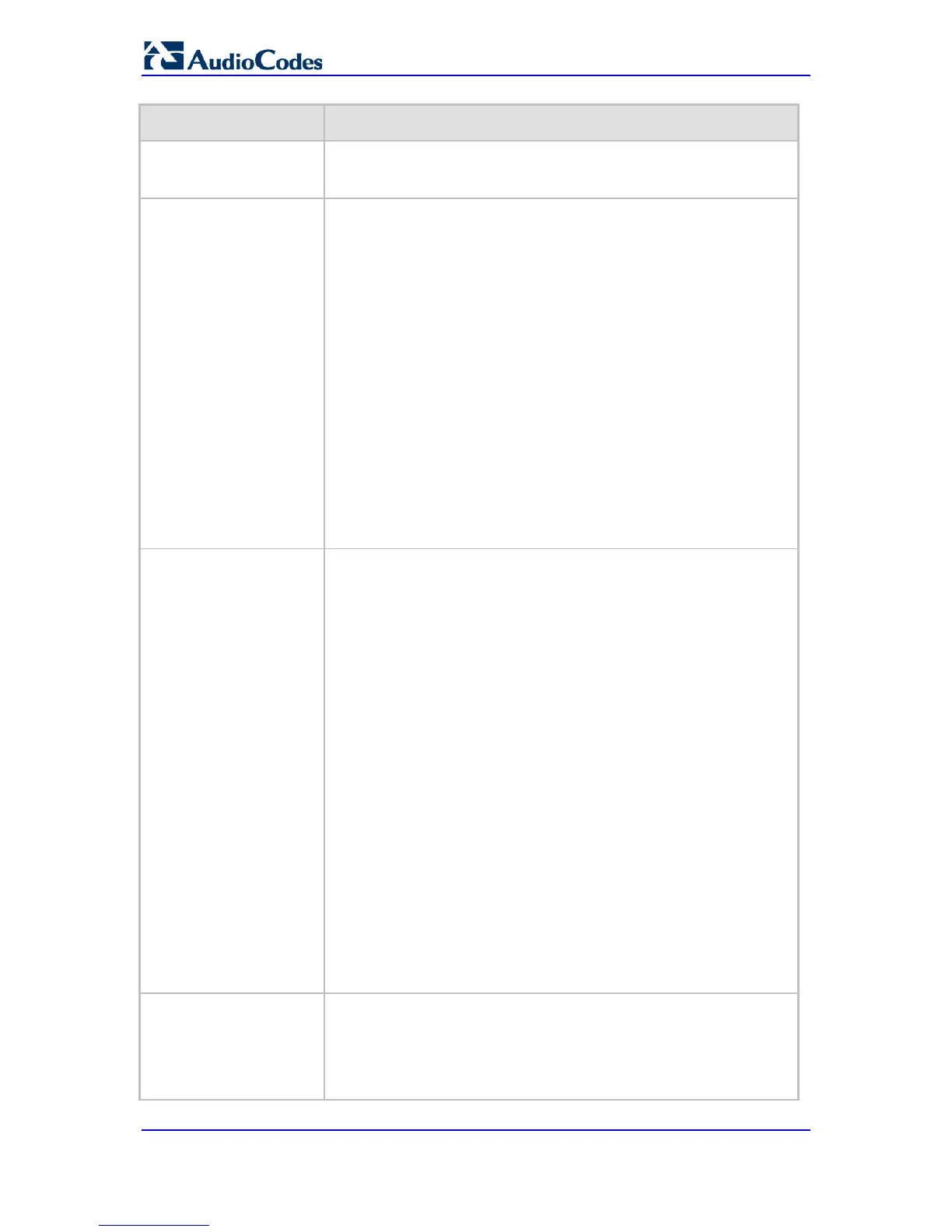This mechanism is active only when Syslog is enabled (i.e., the
parameter EnableSyslog is set to 1).
Web: Media CDR Report
Level
[MediaCDRReportLevel]
Enables media-related CDRs of SBC calls to be sent to a Syslog
server and determines the call stage at which they are sent.
[0] None = (Default) No media-related CDR is sent.
[1] End Media = Sends a CDR only at the end of the call.
[2] Start & End Media = Sends a CDR once the media starts. In
some calls it may only be after the call is established, but in other
calls the media may start at ringback tone. A CDR is also sent upon
termination (end) of the media in the call.
[3] Update & End Media = Sends a CDR when an update occurs in
the media of the call. For example, a call starts and a ringback tone
occurs, a re-INVITE is sent for a fax call and as a result, a CDR
with the MediaReportType field set to "Update" is sent, as the
media was changed from voice to T.38. A CDR is also sent upon
termination (end) of the media in the call.
[4] Start & End & Update Media = Sends a CDR at the start of the
media, upon an update in the media (if occurs), and at the end of
the media.
Note: To enable CDR generation as well as enable signaling-related
CDRs, use the CDRReportLevel parameter.
Web/EMS: Debug Level
CLI: debug-level
[GwDebugLevel]
Defines the Syslog debug logging level.
[0] 0 = (Default) Debug is disabled.
[1] 1 = Flow debugging is enabled.
[5] 5 = Flow, device interface, stack interface, session manager,
and device interface expanded debugging are enabled.
[7] 7 = This option is recommended when the device is running
under "heavy" traffic. In this mode:
Syslog messages are bundled into a single UDP packet, after
which they are sent to a Syslog server (bundling size is
determined by the MaxBundleSyslogLength parameter).
Bundling reduces the number of UDP Syslog packets, thereby
improving CPU utilization.
Note that when this option is used, in order to read Syslog
messages with Wireshark, a special plug-in (i.e., acsyslog.dll) must
be used. Once the plug-in is installed, the Syslog messages are
decoded as "AC SYSLOG" and are dispalyed using the ‘acsyslog’
filter instead of the regular ‘syslog’ filter.
Notes:
This parameter is typically set to 5 if debug traces are required.
However, in cases of heavy traffic, option 7 is recommended.
Options 2, 3, 4, and 6 are not recommended.
Web: Syslog Facility
Number
EMS: SyslogFacility
[SyslogFacility]
Defines the Facility level (0 through 7) of the device’s Syslog
messages, according to RFC 3164. This allows you to identify Syslog
messages generated by the device. This is useful, for example, if you
collect the device’s and other equipments’ Syslog messages, at one
single server. The device’s Syslog messages can easily be identified

